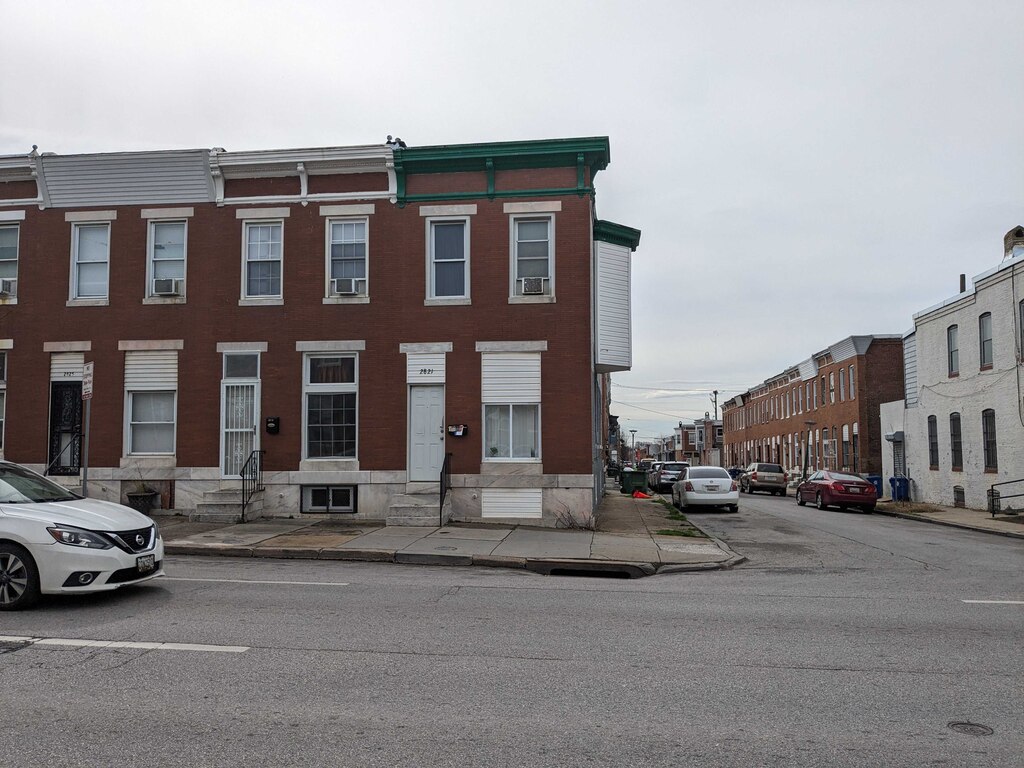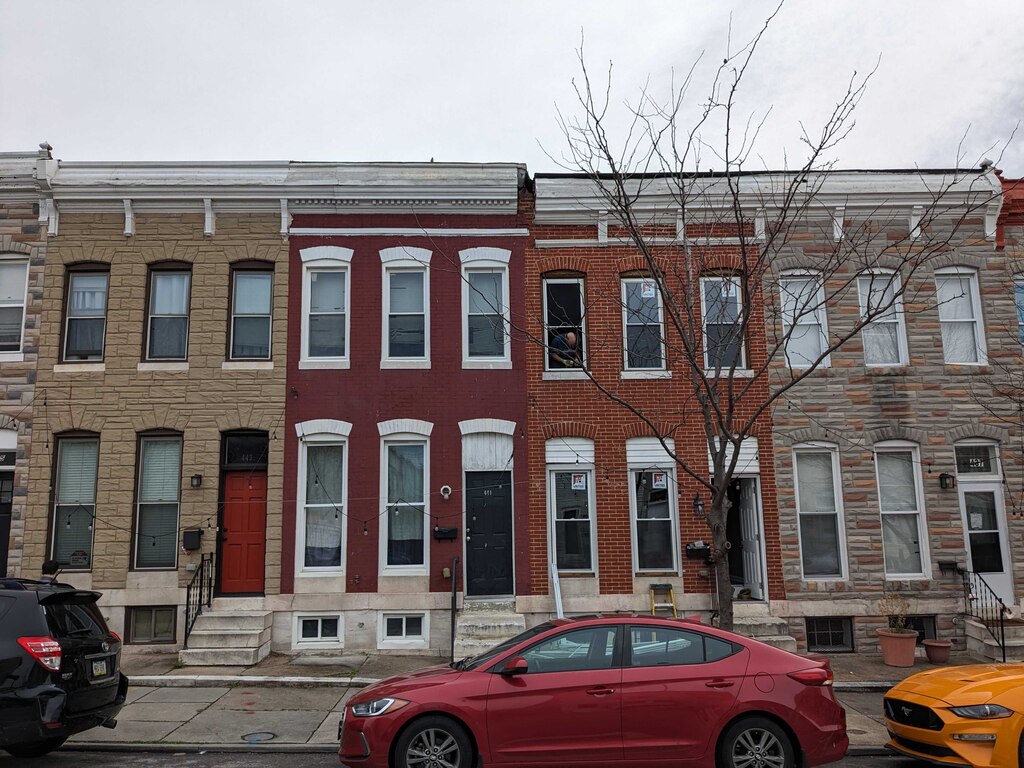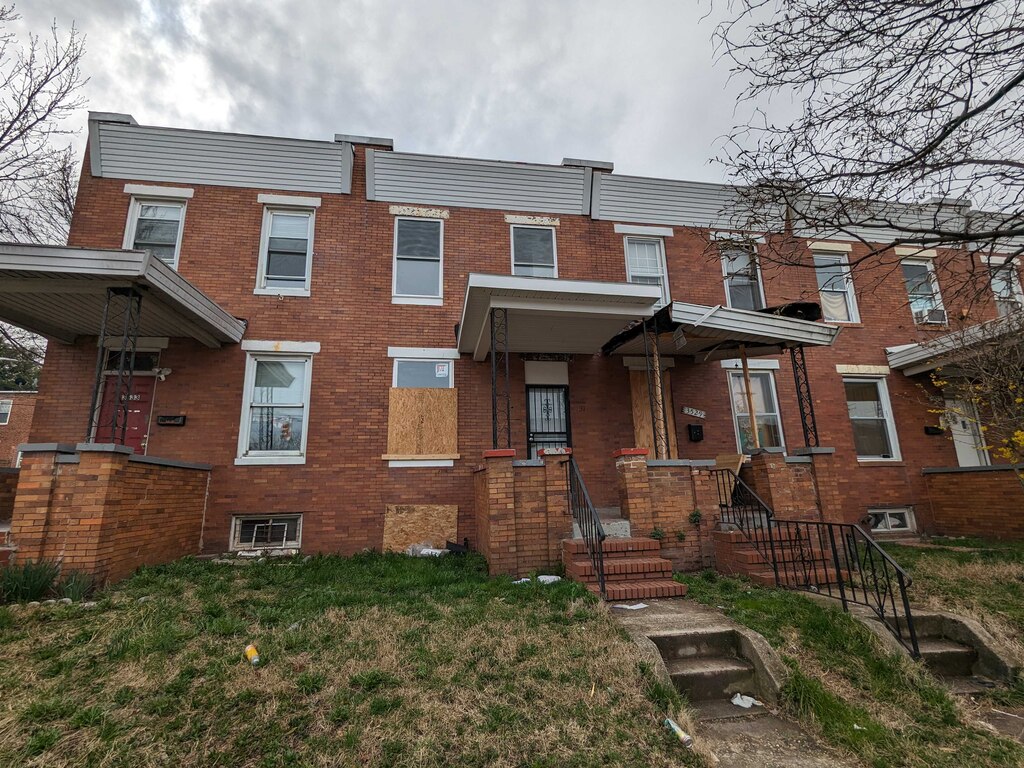A year ago, the developer P. David Bramble closed a real estate deal he calls critical to Baltimore’s future, central to his legacy and more difficult than almost any other project in his real estate portfolio.
He’s talking about rowhomes.
Two months before his firm MCB Real Estate finalized the $83 million purchase of Harborplace — the twin pavilions along Baltimore’s Inner Harbor — Bramble spent $14.3 million on a deal with a much lower profile. He bought 128 rowhomes in an area of East Baltimore that has undergone waves of revitalization and investment, yet still struggles with dilapidated homes, out-of-town speculators and vacancy.
MCB spent an average of about $110,000 for each of the rowhomes, a quarter of which are vacant, according to city records. Bramble said his firm is renovating the homes, which will then either be sold or rented on a case-by-case basis.
MCB, which is known for its apartment complexes, retail centers and commercial buildings, purchased the East Baltimore homes quietly. In an interview with The Baltimore Banner, Bramble said the firm he co-founded also owns multiple portfolios of single-family homes in the Baltimore area, holdings it hasn’t touted publicly.

Property sales are public records, but many real estate firms, including MCB, create individual LLCs to own investments. That can make it difficult to understand who owns certain properties.
Bramble said he couldn’t recall the exact number of single-family homes his firm owns.
“I honestly have no idea, but it’s a lot,” Bramble said. “I can tell you we don’t own thousands of rowhomes.”
He declined to disclose his residential portfolio, noting: “I’m not a politician. I’m not obligated to tell you what I own.”
‘Baltimore has tons of upside’
The Banner learned about his ownership of the East Baltimore rowhomes after police raided a house last month in the 3400 block of Esther Place. The home — owned by an LLC controlled by MCB — was supposed to be vacant.
Inside, police say, was a trove of apparently stolen goods, including bicycles, power tools, construction equipment, electronics and more. Property records showed the home was one of 128 rowhomes that traded hands in a single transaction last April.
LLCs created by Bramble bought the portfolio from a series of LLCs controlled by the Pennsylvania developer BDP Impact Real Estate, which did not respond to a request for comment. The 128 rowhomes are scattered within a few neighborhoods north and northeast of Patterson Park. Few are directly adjacent.
Bramble acknowledged the purchase gives him outsized influence in the future of that area.
The vacant home allegedly used as the hub of a theft operation is one of five homes owned by MCB on that block — three of which have vacant building notices, the official designation from the city for homes that are empty and unsafe.
Baltimore has struggled with a vacant housing crisis for decades. The city lists more than 13,000 homes as vacant, but developers believe the true number is much higher. There’s often no financial incentive to fix up an abandoned rowhome because it can cost more money to renovate than can be recouped in an eventual sale.
That leaves speculators, long-term landlords and nonprofits as the only groups trying to buy property in some areas.
Bramble said he believes many neighborhoods in Baltimore are undervalued, and developers will eventually regret passing up this opportunity to invest in the city.
“Baltimore has tons of upside,” he said. “Even in the toughest neighborhoods.”
A diverse community
An undertaking like this — with scattered sites, hundreds of permits and lots of renovation work — is “very, very difficult,” Bramble said. Sometimes there are tenants who can’t move and need help, he said, and sometimes there are squatters.
Since buying the properties, 32 eviction cases have been filed in circuit court, though it’s unclear from online court records whether any residents have been evicted. Three homes have already been sold at an average of $109,000 per house.
City records showed 36 of the properties had active building permits as of March.
Walking down the streets where MCB and other investors have bought property, the air is punctuated with sounds of saws, power drills, nail guns and hammers. Crews work behind boarded-up front doors next to dilapidated homes and trash-strewn alleys. A few blocks away are pristine rows of renovated homes.

To the west is Johns Hopkins Hospital, and its Bayview campus to the east. To the south is Canton, one of the hottest submarkets in Baltimore real estate. The area has seen a surge in immigrants from Central and South America, and many of the signs advertising rental homes are in English and Spanish.
Mark Tough has lived in the Patterson Park neighborhood for two decades, and has firsthand experience in fixing up vacant homes and renting them. In the 2000s, he held senior roles in the Patterson Park Community Development Corp., which rehabbed hundreds of homes in the area.
The nonprofit developer sold some to individual homeowners and kept others as rental properties with affordable rates, Tough said. Back then, the nonprofit could buy almost an entire block of rowhomes at once, some homes as cheaply as $2,000.
Property values rose and private developers started renovating homes, too, Tough said, but the collapse of the housing bubble caused the Patterson Park Community Development Corp. to declare bankruptcy in 2009. The nonprofit was forced to sell about 150 rental homes, Tough said. While some went to responsible owners who maintained the properties, others didn’t.
The year of the bankruptcy is when Mark Parker said he became pastor at Breath of God Lutheran Church in the Patterson Park neighborhood, where much of MCB’s portfolio is concentrated. The area has changed a lot since 2009, Parker said. Some blocks have families who have lived here for generations, he said, while others have refugees and immigrants who arrived from Venezuela, Honduras and Guatemala a few months ago.
“It’s an incredibly diverse community,” said Parker, who is also running to represent the area in the City Council.
In recent years, as the housing market heated up, Parker said more and more out-of-town investors have been treating older and dilapidated rowhomes like investment properties. They buy them at irrationally high prices, do little or no renovation work, and wait for their value to inflate even further, he said.
Parker said he’s not against out-of-town owners, but he gets excited when local people invest. Local owners are more likely to fix up properties and respond to tenant concerns, he said.
“It’s really encouraging when folks want to be part of helping communities stabilize and grow,” Parker said.

Bramble said that’s exactly why he’s investing in the neighborhoods north and east of Patterson Park.
Buying Harborplace and pitching an ambitious redevelopment on the city’s waterfront has put a spotlight on this West Baltimore native. But Bramble said these investments in residential neighborhoods are just as critical to the future of Baltimore.
“If I wake up in 30 years and my only contribution to Baltimore is some fancy buildings downtown, then I would have failed,” Bramble said.
Baltimore Banner reporter Hallie Miller contributed to this report.




Comments
Welcome to The Banner's subscriber-only commenting community. Please review our community guidelines.